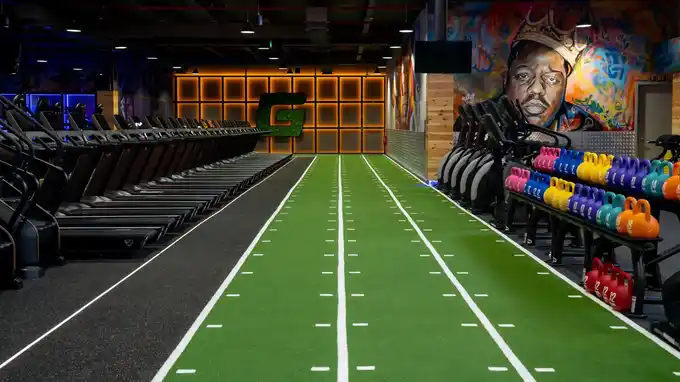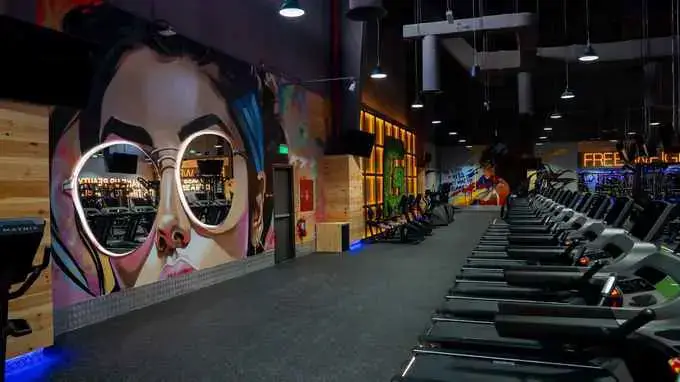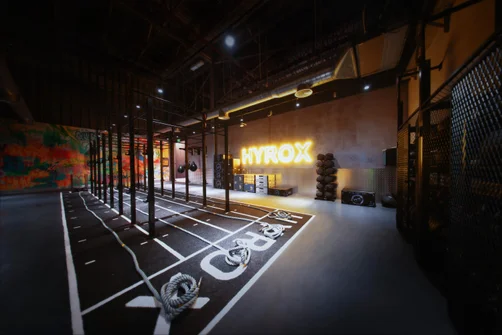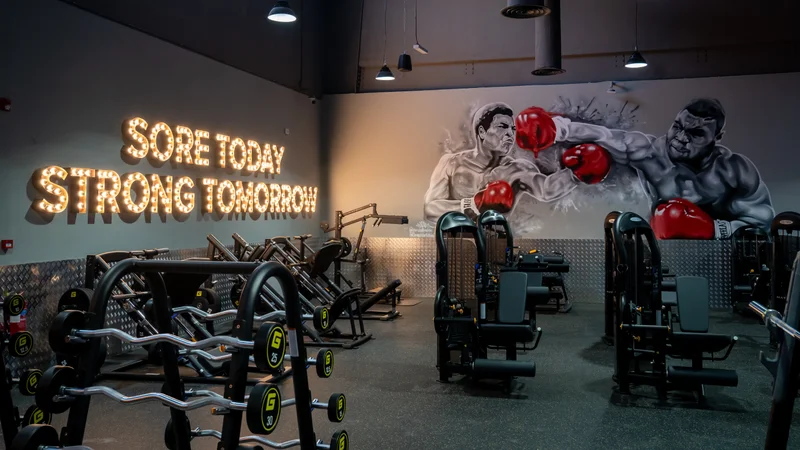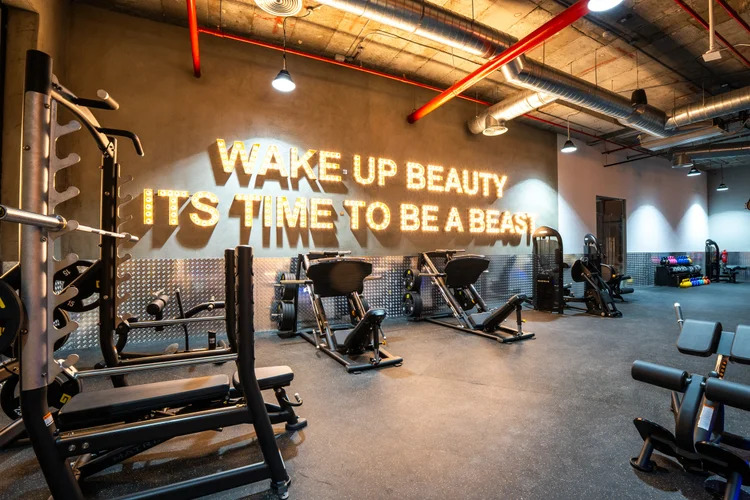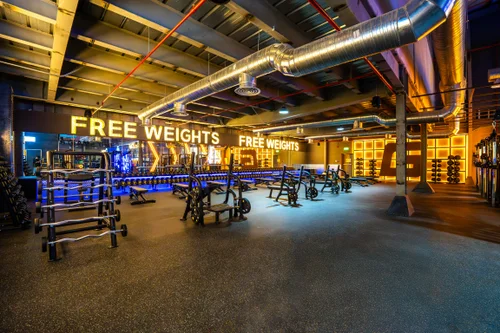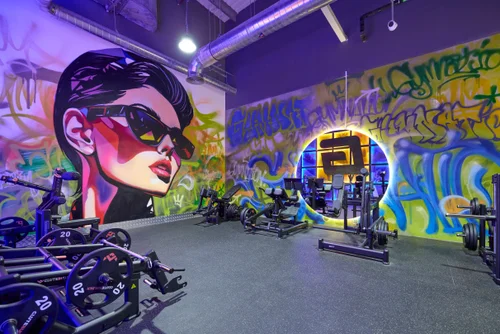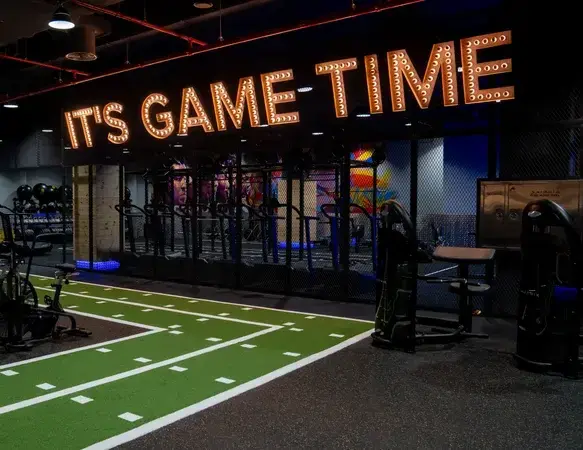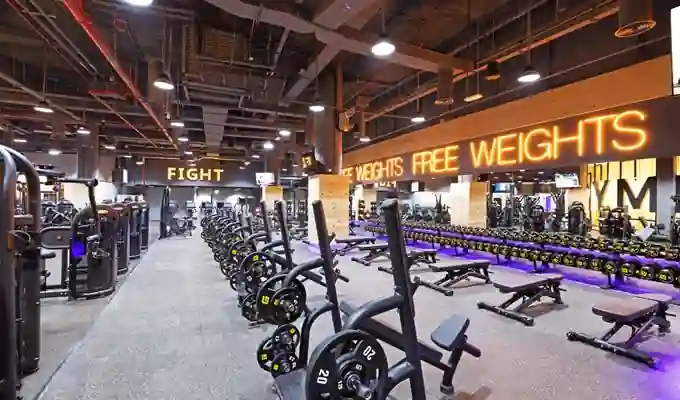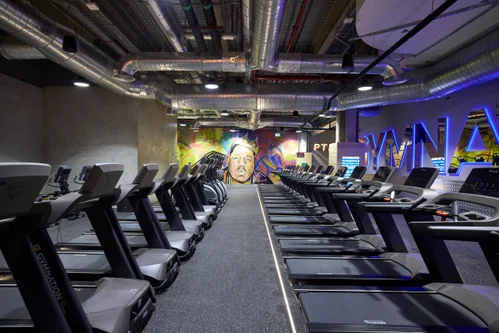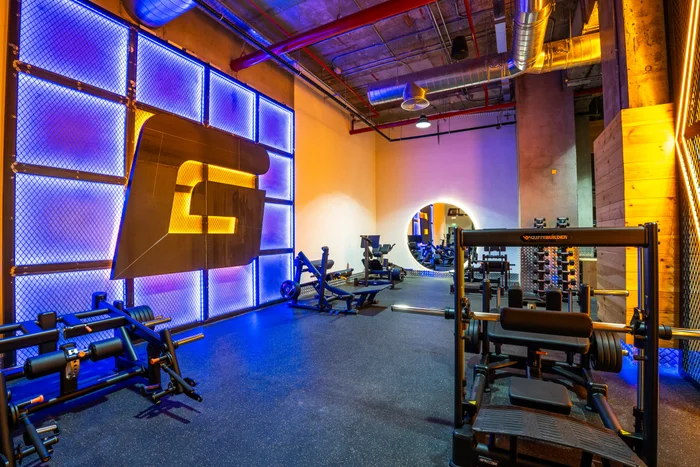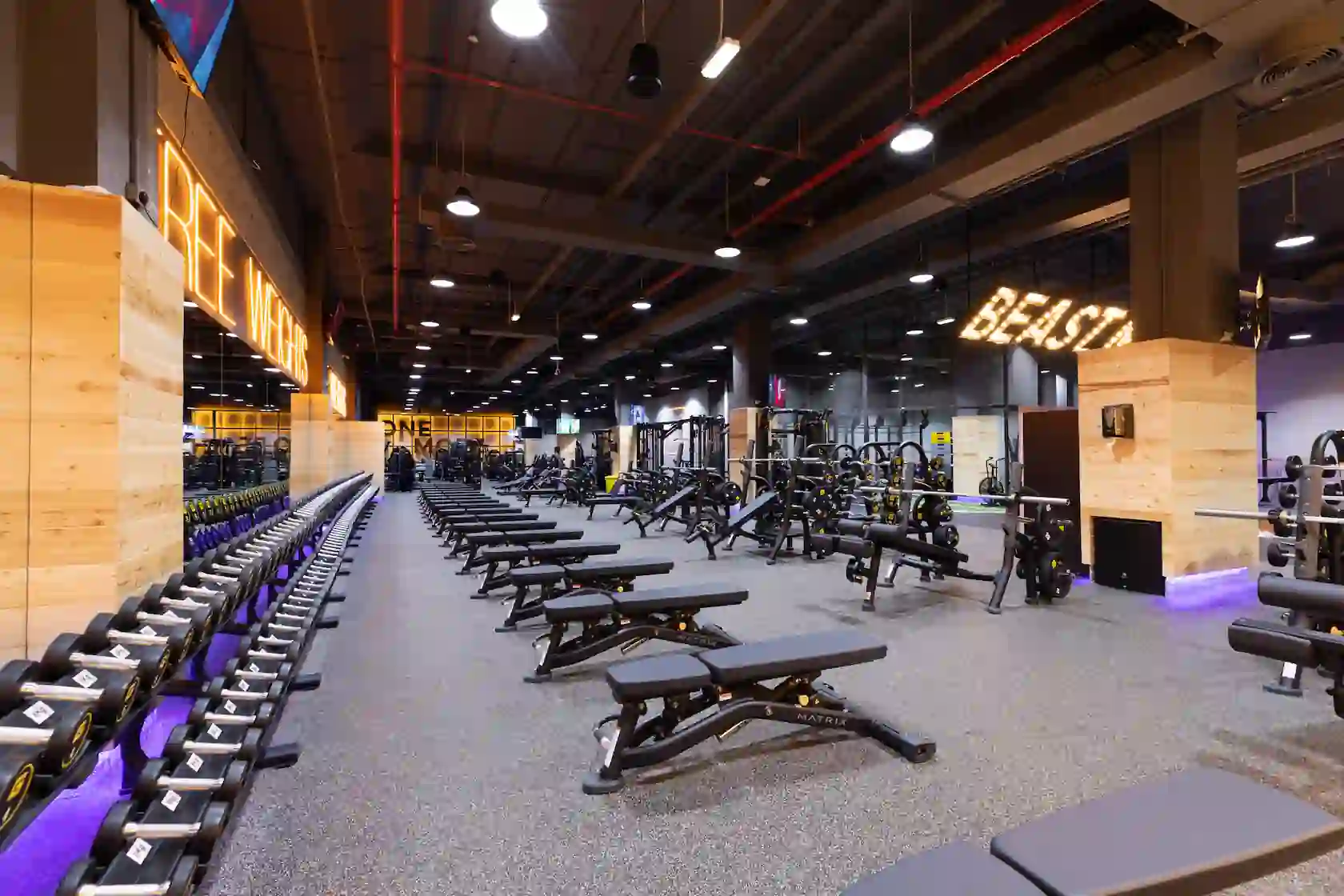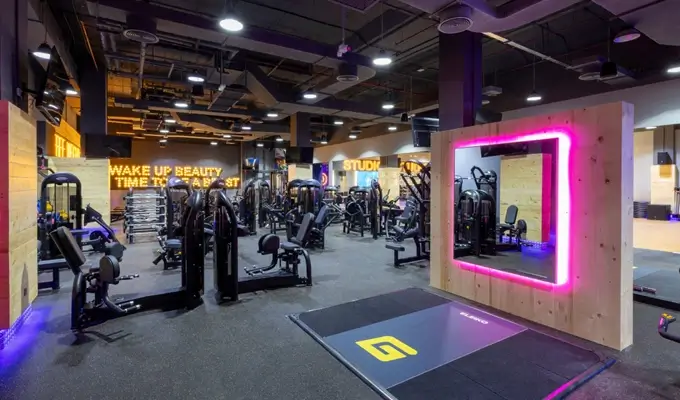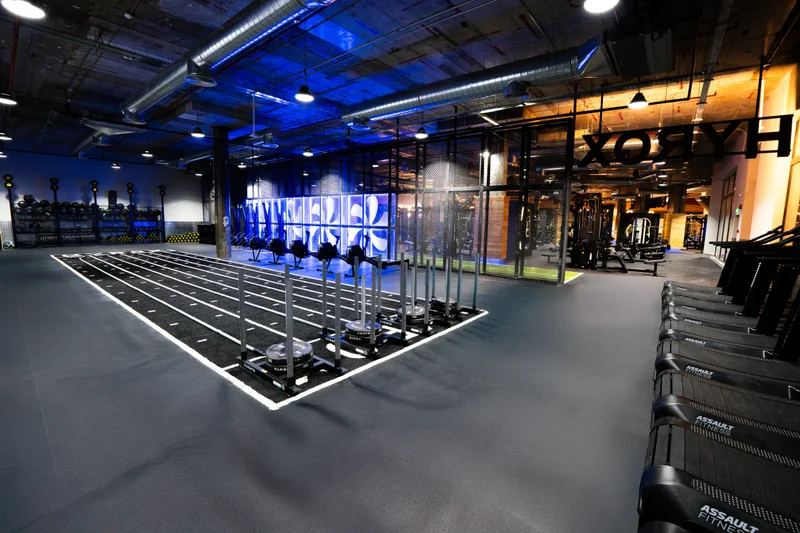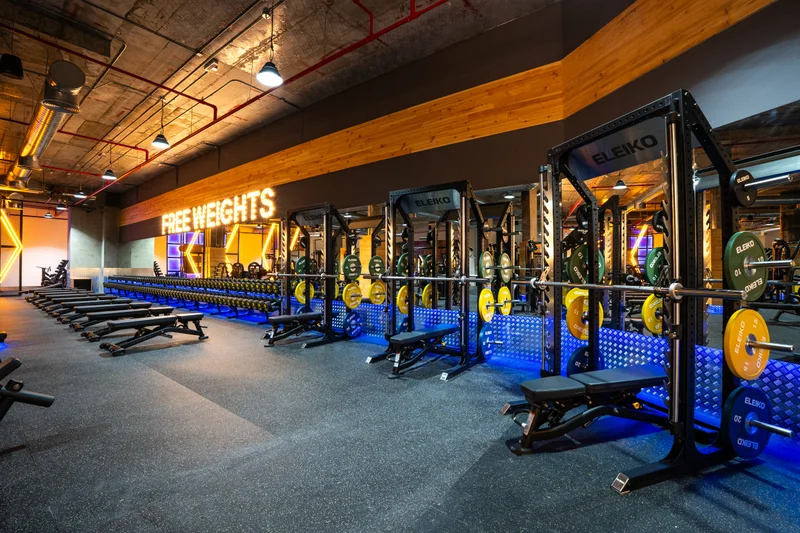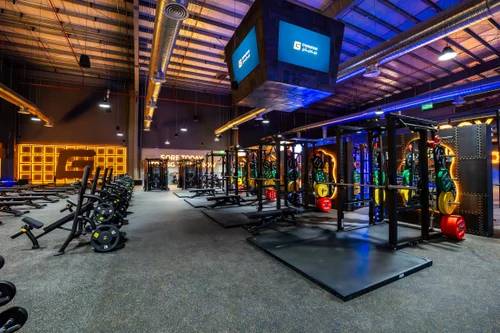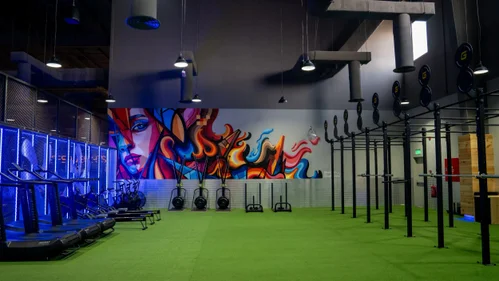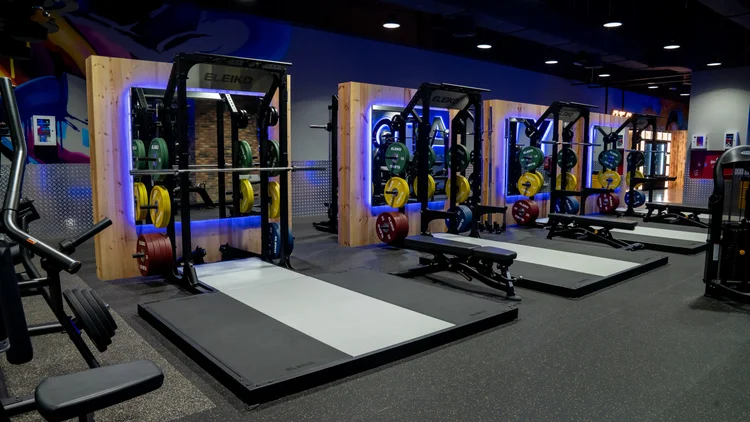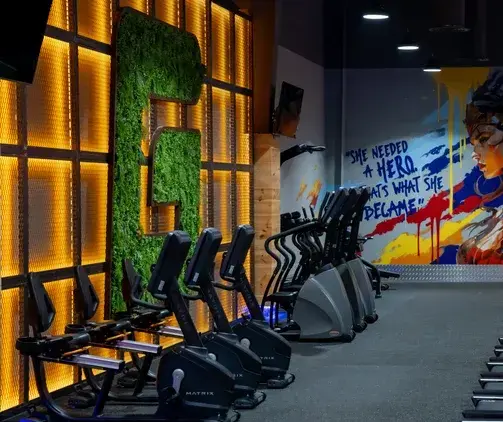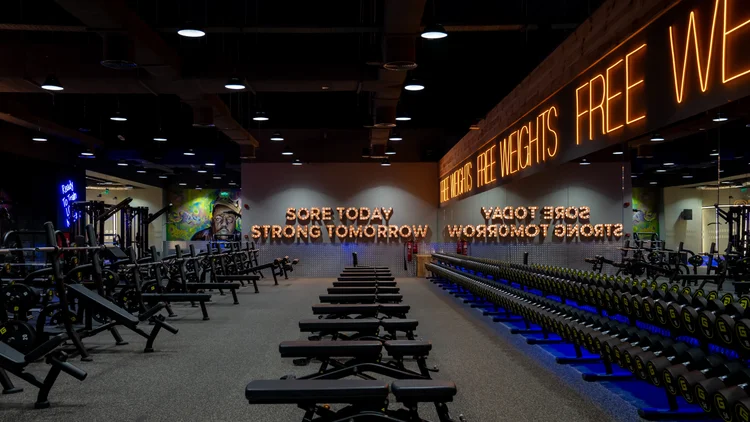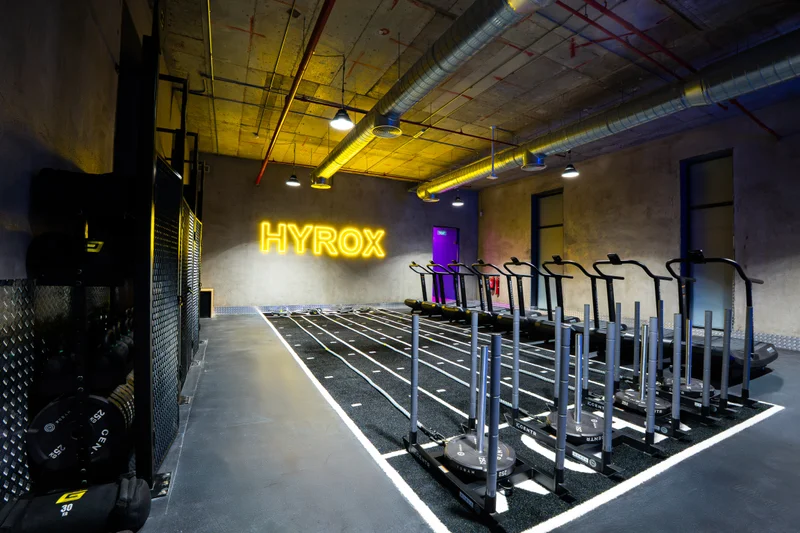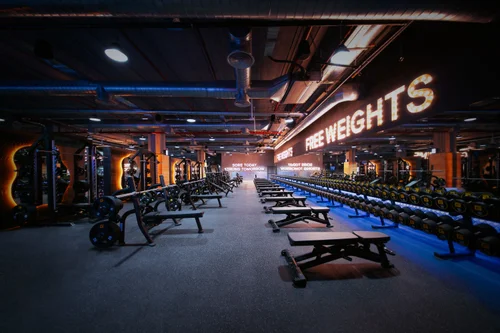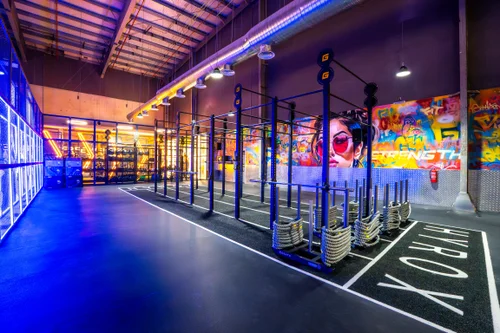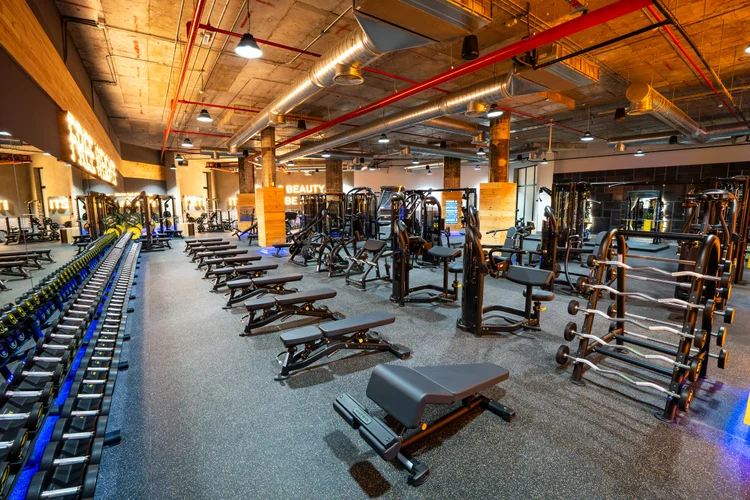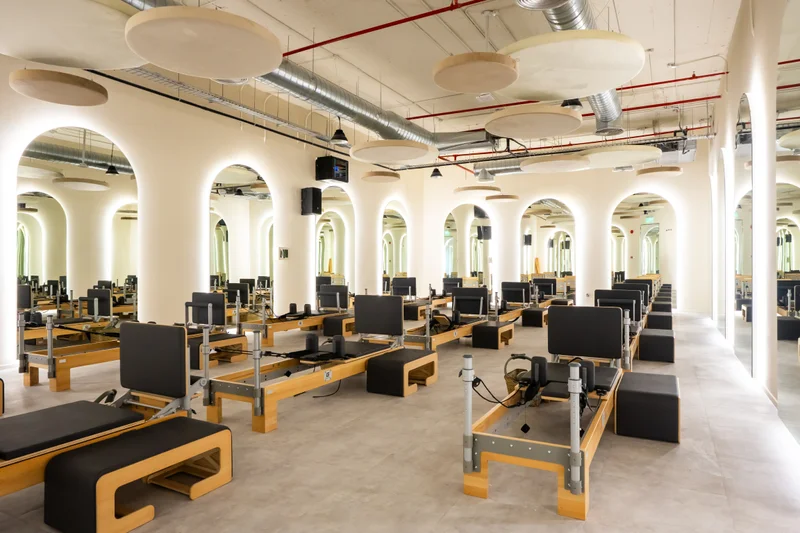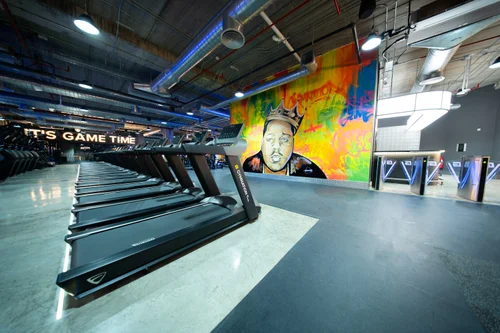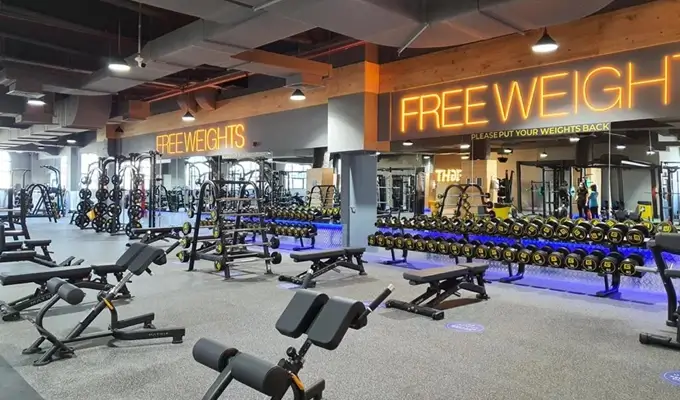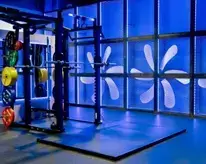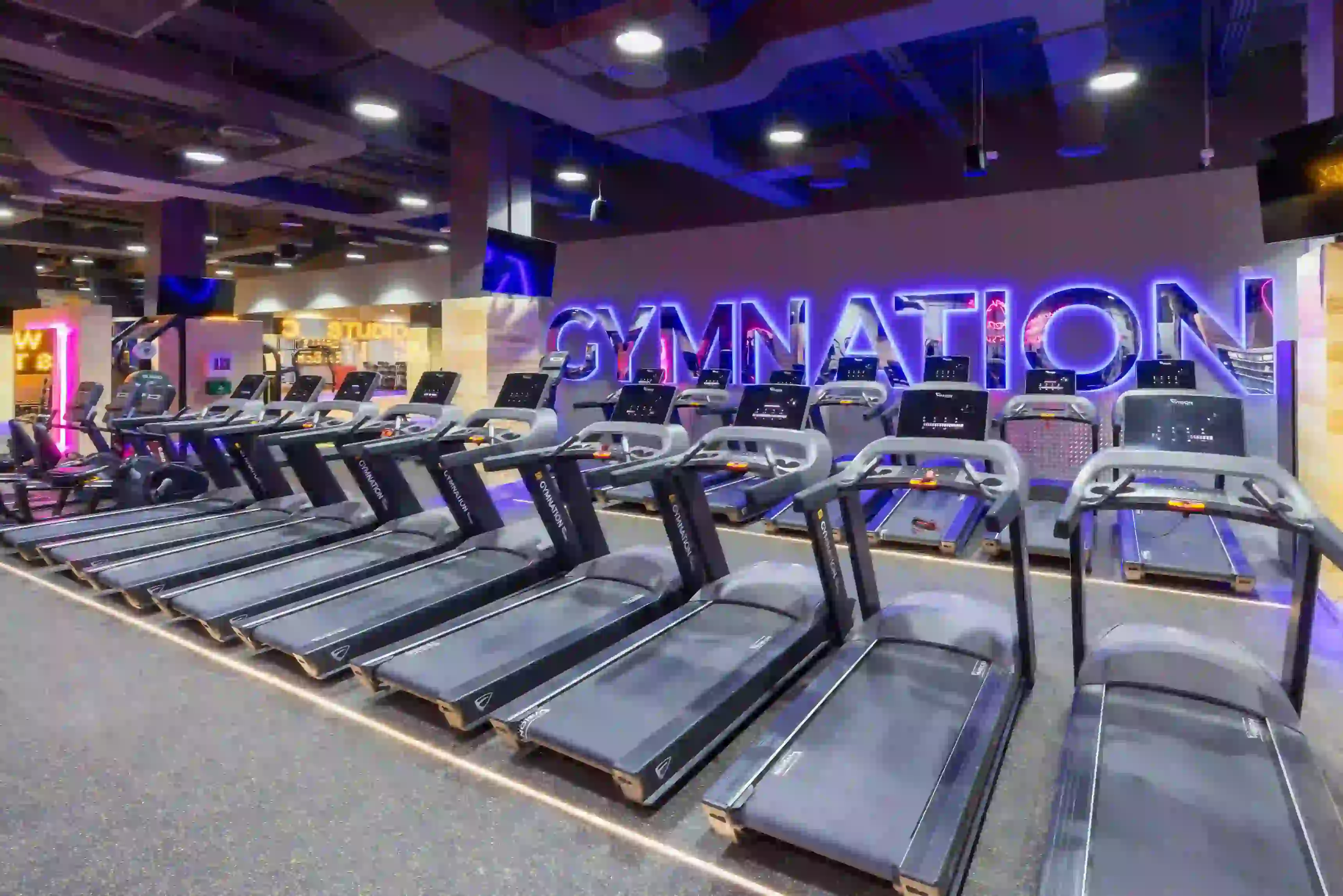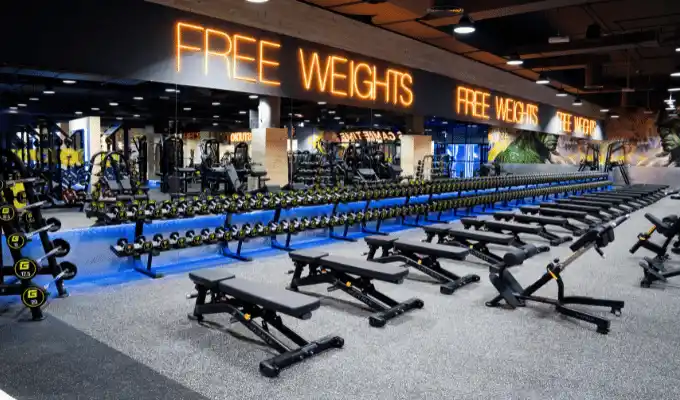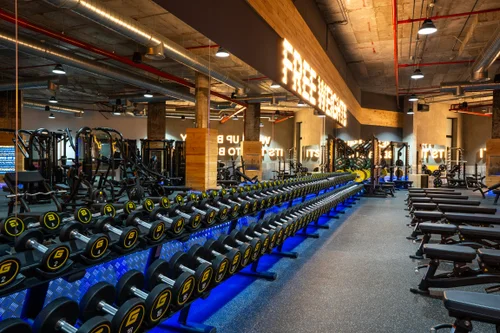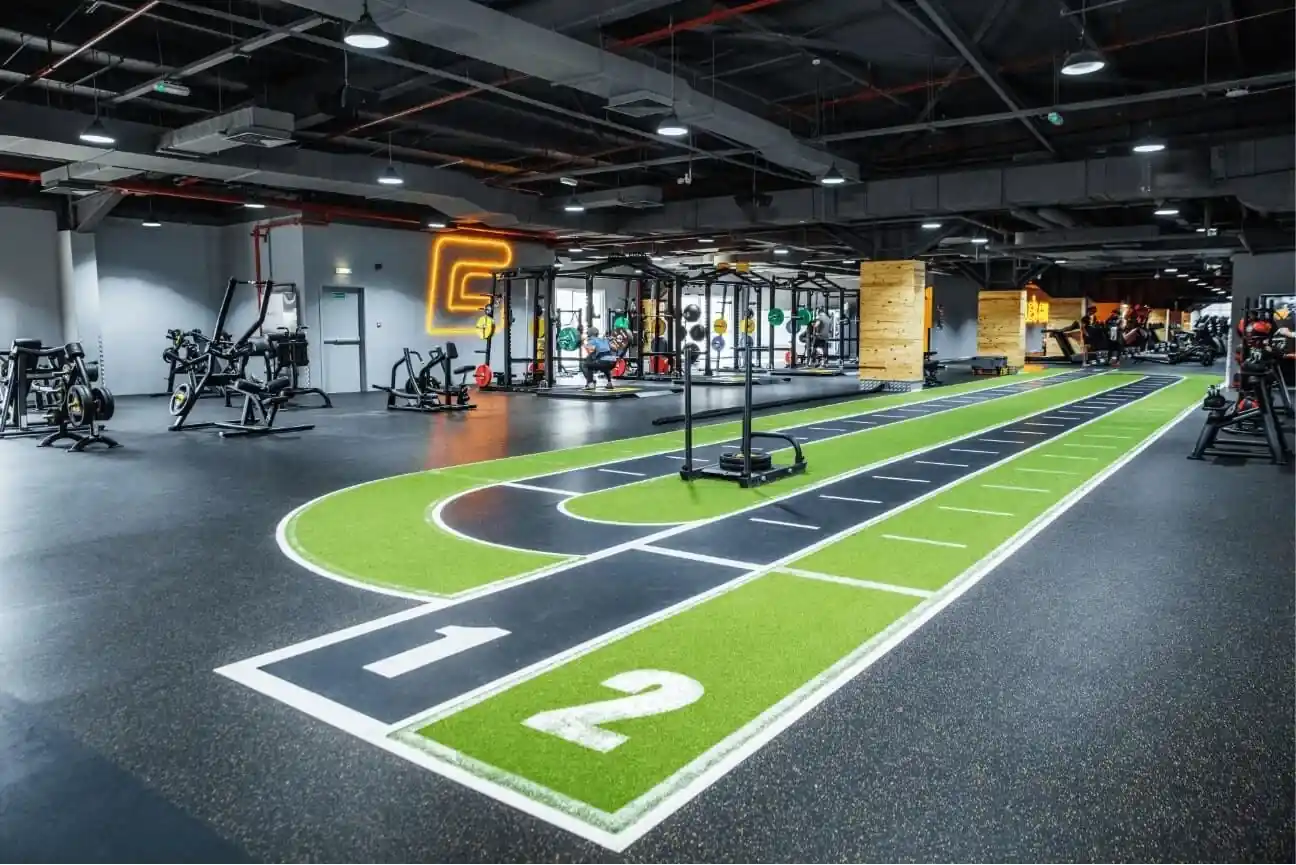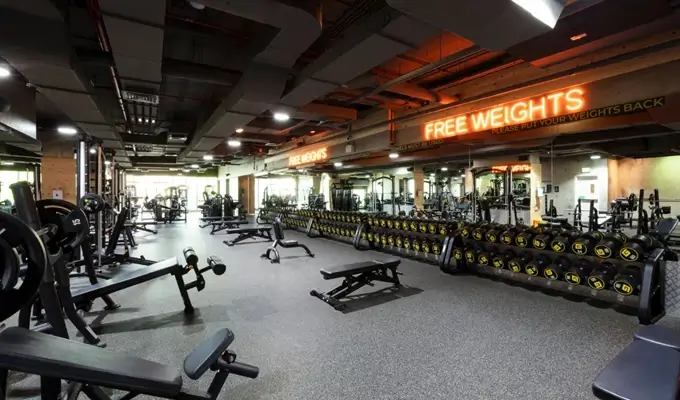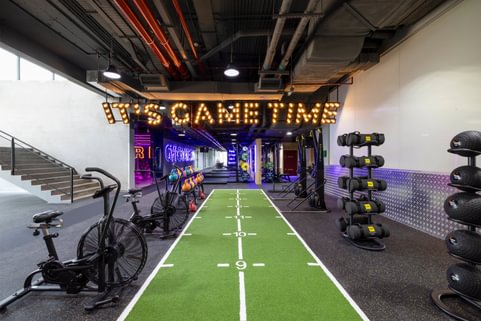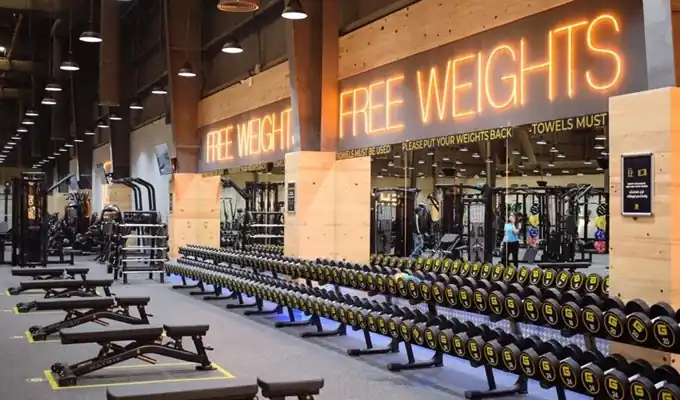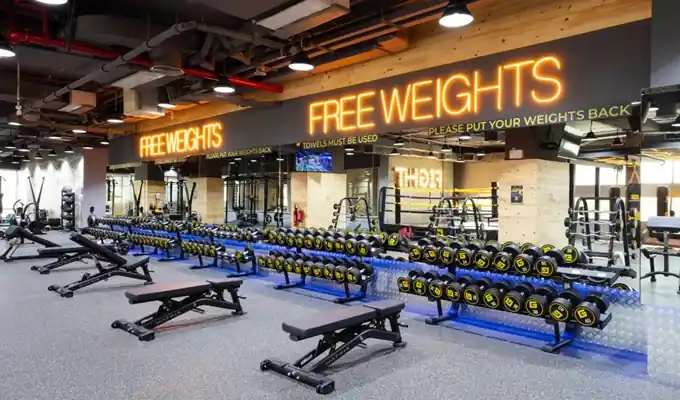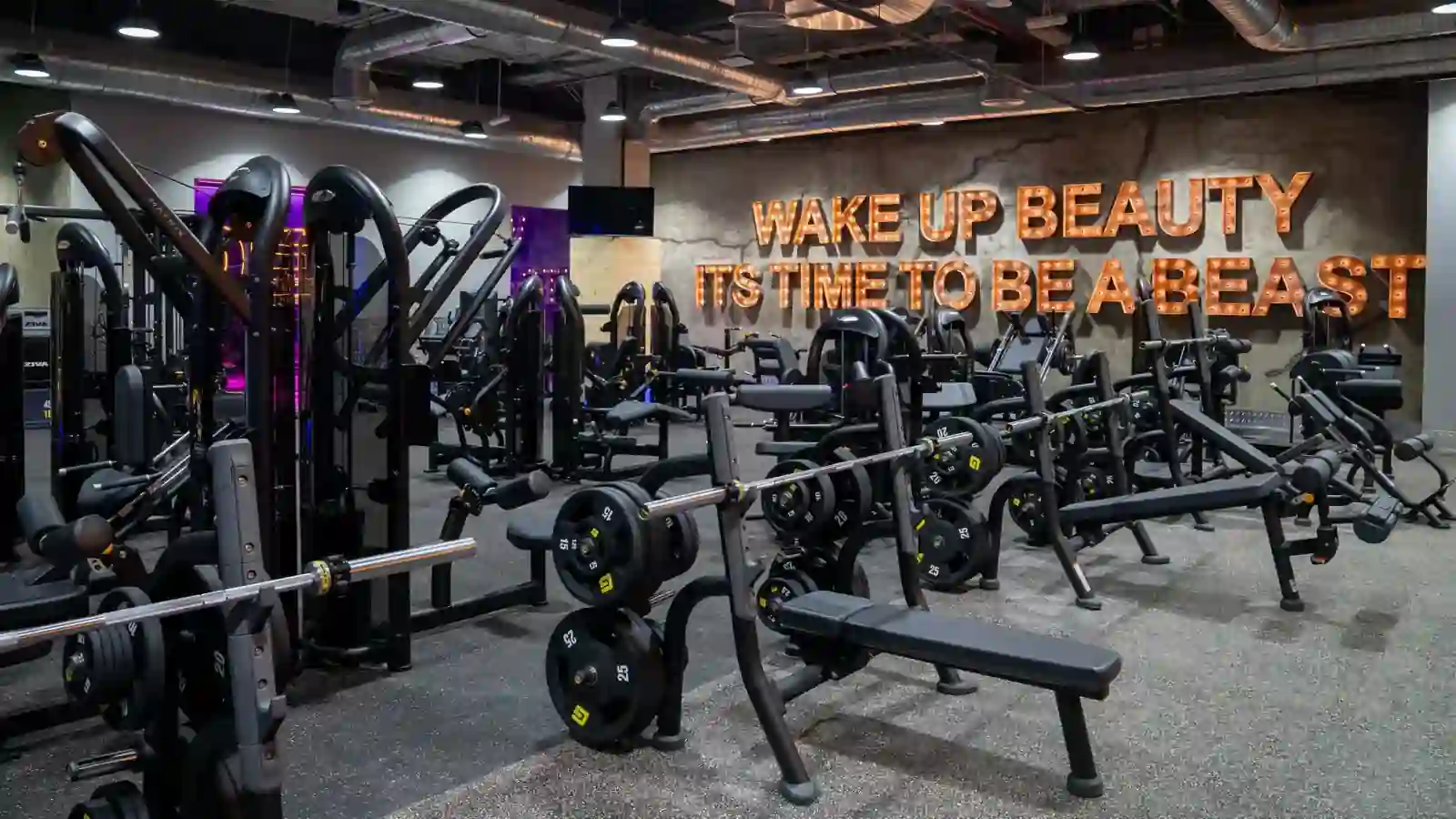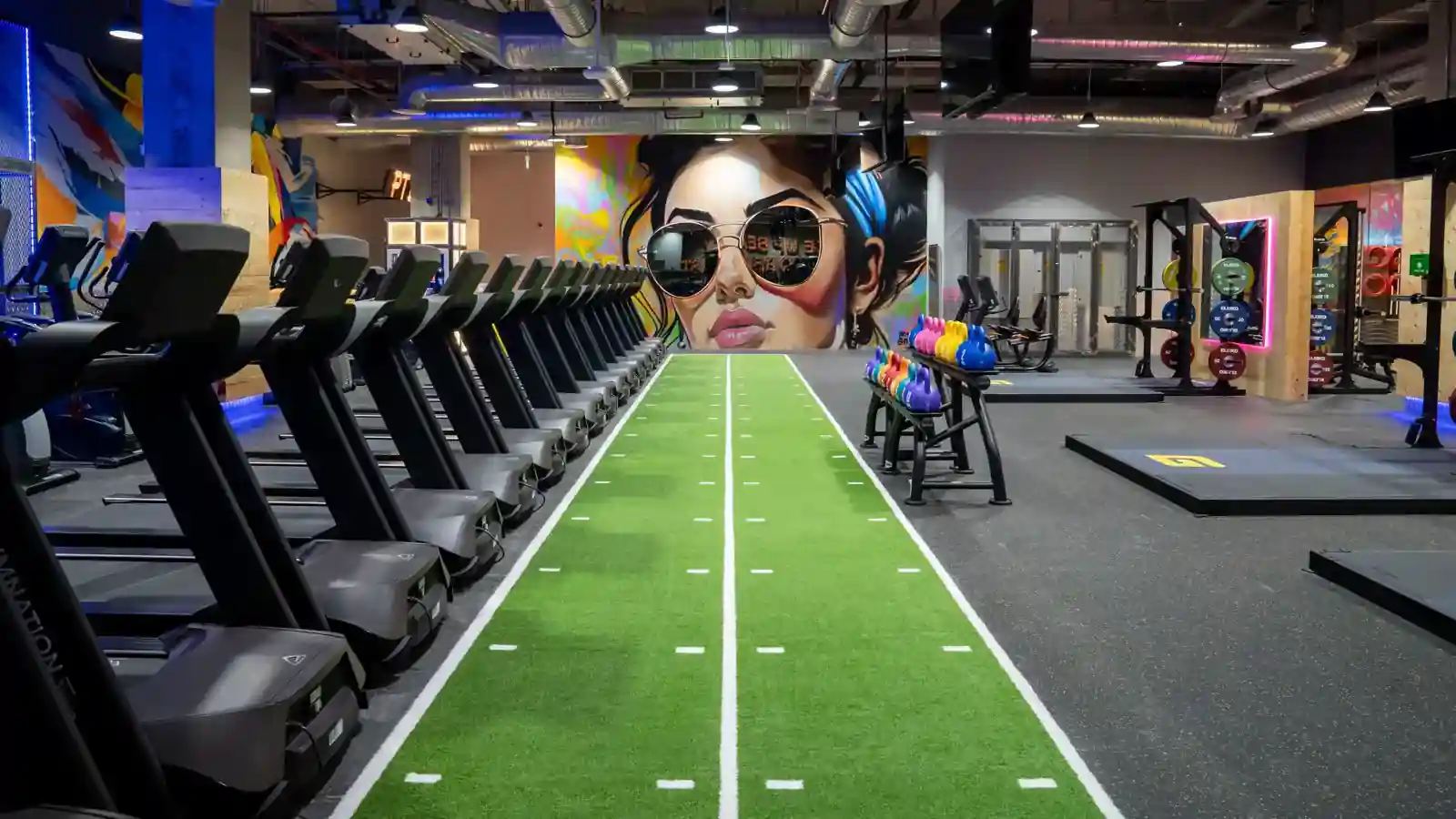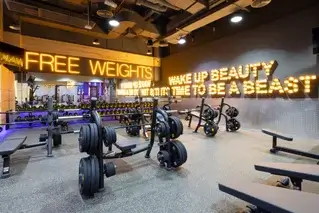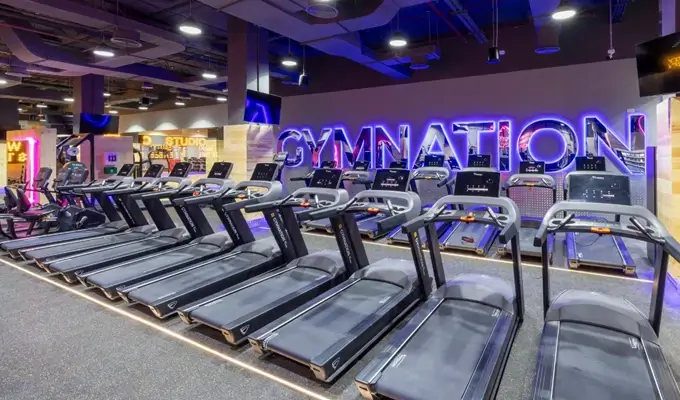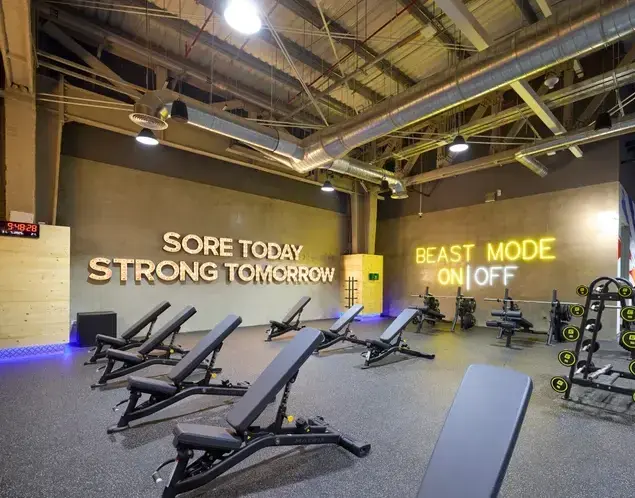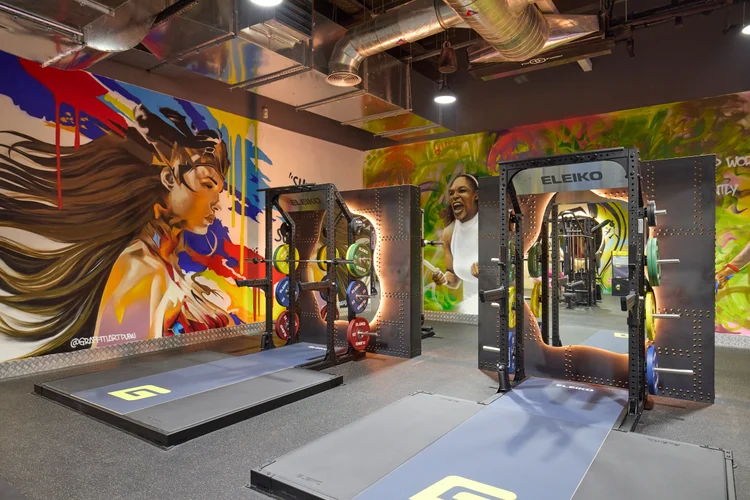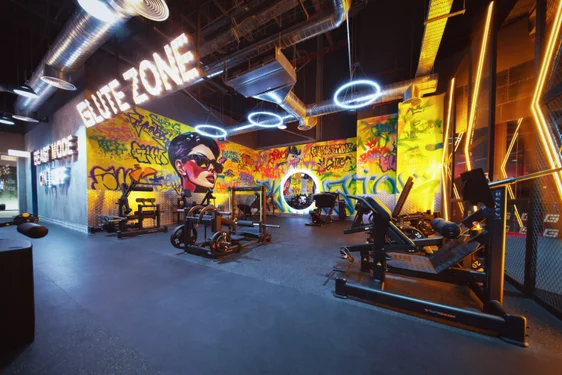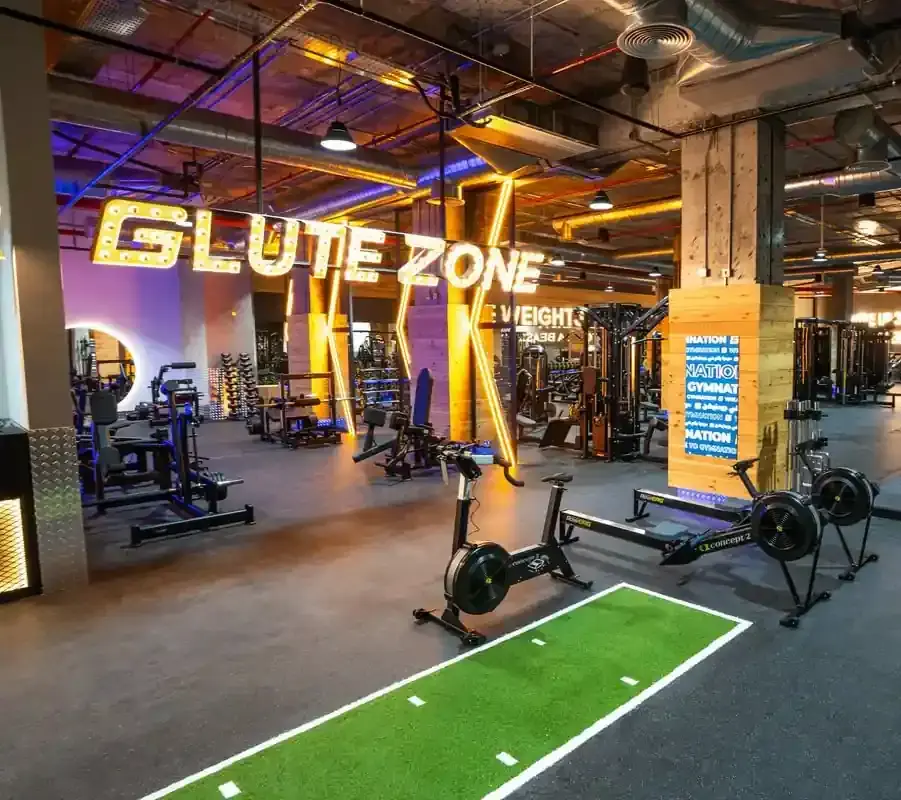Top Treadmills Reviewed by Fitness Experts
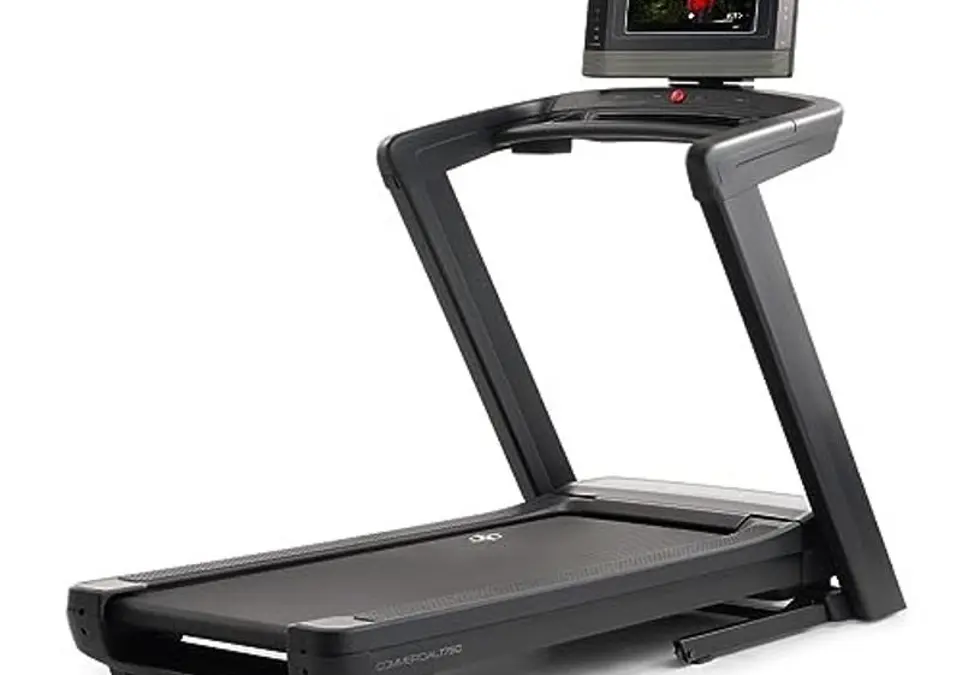
SIGN UP FOR YOUR FREE DAY PASS TODAY!
Since 2020, the Forbes Vetted team has reviewed over 50 of the top home-use treadmills, evaluating them on their superior construction, advanced features, user-friendly interfaces, and long-term durability.
For 2024, our top treadmill choice is the NordicTrack Commercial Series 1750, celebrated for its exceptional quality and robustness.
Our testers and expert panel were particularly impressed by its powerful motor, spacious and cushioned deck, and thoughtful features such as decline capabilities, a large, swiveling touchscreen, and Bluetooth connectivity.
Alongside the 1750, this guide recommends six other high-scoring treadmills from our ongoing testing.
Our evaluation team includes editors and contributing experts, like certified personal trainers, competitive runners, and amateur athletes.
Best Treadmill Overall: NordicTrack Commercial Series 1750
Best Treadmill Under $1,000: Horizon Fitness 7.0 AT
Best Treadmill For Walking: Sole Fitness F80
Best Treadmill For Running: Peloton Tread
Best Treadmill For Incline: BowFlex Treadmill 10
Best Folding Treadmill: NordicTrack Commercial Series 1250
Best Premium Treadmill: Peloton Tread+
Best Treadmill Overall
A Superior Combination of Features, Power, and Foldability
Speed Range: 0 to 12 mph | Incline Range: -3% to 12% | Warranty: 10 years for frame, 2 years for parts, 1 year for labor | Special Features: 30-day iFIT trial included, Bluetooth headphone and heart rate connectivity, Google Maps integration
What’s notable:
The Commercial Series 1750 combines robust construction, a comfortable deck, useful technology, and a powerful yet quiet motor that rivals commercial models found in gyms.
What could be better:
It’s a large piece of equipment that may not suit all athletes or spaces. It doesn't support streaming of external content and is on the pricier side, especially when not on sale.
As dedicated athletes who spend hours each week on treadmills, we confidently recommend the NordicTrack Commercial Series 1750.
Whether you're a serious runner logging many miles or a casual gym-goer wanting a durable, high-quality machine, you’ll find this model impressive.
We love its powerful 3.5 continuous horsepower (CHP) motor, wide belt, and spacious 20 x 60-inch running deck, which accommodates even the longest strides.
Although it’s quite large, it can be folded when not in use and uses hydraulics to assist with folding (a useful feature given that the machine weighs over 300 pounds).
Competitive marathoner and triathlete Sheila Monaghan confirms that the wide belt contributes to the machine’s overall stability, making it feel like running outdoors.
The range of inclines enhances this “real-road” experience by simulating hilly terrain.
With its incline variability from a 12% grade to a -3% decline (a unique and notable feature), it mimics a more realistic running environment.
The only other treadmill that matches this incline variety on our list is the BowFlex Treadmill 10, which ranges from 15% incline to -5% decline.
The treadmill also features entertainment options that we found appealing.
Its impressive 14-inch touchscreen display swivels, allowing us to use the built-in iFIT workouts even when we stepped off the treadmill for strength training or stretching.
The variety of iFIT workouts caters to everyone—from beginners to elite runners—and the Google Maps street-view integration provides an immersive experience.
While it is an investment, costing over $2,000 at full price, almost all the experts we consulted recommended the 1750 for its quality and durability.
Monaghan notes, “This treadmill is not flimsy or bouncy like some others [I tried],” which is crucial for accommodating a variety of users and ensuring stability during sessions of all lengths.
This treadmill has a maximum weight capacity of 400 pounds.
If you can do without the fitness classes and advanced technology, you might save money with a model like the Horizon Fitness 7.0 AT, which offers similar power and incline features.
Similarly, the NordicTrack Commercial Series 1250 is a bit cheaper and shares some qualities with the 1750, such as foldability and iFIT technology, although it has a slightly less powerful 3.0 CHP motor.
However, if you prioritize a smooth ride with numerous added features and a solid warranty, the Commercial 1750 is the best choice.
Best Treadmill Under $1,000
A Basic Machine with Bluetooth and Easy Controls
- Speed range:5 to 12 mph
- Incline range: 0% to 15%
- Warranty: Lifetime for both frame and motor, 3 years for parts, 1 year for labor
- Special features: Bluetooth capability, intuitive thumb dials on handlebars
Key Features
Noteworthy Attributes
This model offers impressive features at a more affordable price compared to others in its category. It can be folded in half using a hydraulic lift and connects with training apps while streaming classes and media via Bluetooth.
Potential Drawbacks
Taller users may find the belt too short for running at higher speeds, and there is no built-in screen, only a basic digital display.
Horizon Fitness 7.0 AT Overview
The Horizon Fitness 7.0 AT provides great value for its sub-$1,000 price. With dimensions of 76 x 35 x 66 inches and a maximum weight capacity of 325 pounds, it’s suitable for most home gyms.
The hydraulic lift feature allows the treadmill to be folded in half, a rare convenience at this price point.
Its speed and incline can be easily adjusted using thumb dials. Bluetooth connectivity enhances its functionality, allowing users to follow classes on platforms like Peloton, connect to apps like Zwift, or play music and movies.
The basic digital display keeps your progress and essential stats visible, and a fast-charging USB port powers your devices.
Performance and Build
In our tests, the treadmill offered a comfortable experience, with footfalls landing solidly on a flexible, well-cushioned deck measuring 20 x 60 inches.
This deck size is only surpassed by more expensive models like the BowFlex Treadmill 10 and Sole Fitness F80.
David Siik, founder of Precision Run at Equinox and author of The Ultimate Treadmill Workout, praised Horizon’s manufacturing quality, highlighting their use of premium components in state-of-the-art factories. This suggests that you won't be sacrificing quality for cost, and the lifetime warranty on the frame and motor supports this durability claim.
Final Thoughts
While the lack of a built-in screen may be noticeable, other treadmills in this price range, such as the NordicTrack Commercial Series 1250 ($1,599) and the ProForm Carbon TLX ($999), offer this feature.
However, the belt size, while adequate for most, might be restrictive for those with longer strides running at high speeds.
Overall, if you seek a treadmill that excels in the basics without breaking the bank, the Horizon 7.0 AT is a top choice.
Best Treadmill for Walking
Comfortable and Impact-Absorbing Model for Extended Workouts
- Speed range: 0.5 to 12 mph
- Incline range: 0% to 15%
- Warranty: Lifetime warranty on motor and frame, 3 years on deck, 3 years on parts, and 1 year on labor
- Special features: Android-powered touchscreen, built-in entertainment apps, wireless charging pad
Key Highlights
Advantages
- The treadmill boasts a wide and highly cushioned deck, making it ideal for long walks and accommodating bigger and taller users.
- The variable incline capability allows for mimicking steep hikes.
Disadvantages
- The treadmill lacks a decline feature.
- The built-in display is relatively small.
Although any treadmill can technically be used for walking, the Sole Fitness F80 excels in providing comfort for longer, low-impact workouts.
Its 22-inch-wide belt offers more space than even the top-tier Peloton Tread+, which has a 20-inch-wide belt.
Thanks to its double-woven construction and thicker cushioning, this treadmill delivers a gentle experience on the joints, making it perfect for extended walking sessions.
The F80 offers incline levels from 0% to 15%, one of the few treadmills on this list to reach such heights.
This feature enables users to add serious hill work to their routine, effectively transforming a simple walk into a challenging hike.
While it's primarily recommended for walking, the treadmill is versatile enough for light running and interval training, thanks to its powerful 3.5 CHP motor and a top speed of 12 mph.
Recent upgrades to the F80 include a touchscreen with built-in entertainment apps via the Sole+ platform and a wireless charging pad, adding convenience to any workout.
However, the F80 does have some drawbacks. Considering its price compared to others on this list, a larger display than the current 10.1-inch screen would be expected.
Additionally, the treadmill lacks a decline feature, which could offer a more comprehensive workout experience.
If these features are important to you, the NordicTrack Commercial 1750 or the BowFlex 10 might be better choices.
Nonetheless, if you’re looking for a treadmill tailored for walking but versatile enough for running, the Sole Fitness F80 comes highly recommended.
Best Treadmill for Running
Thoughtful and User-Friendly Features to Enhance Every Run
- Speed range: 0 to 12.5 mph
- Incline range: 0% to 12.5%
- Warranty: 5 years for frame, 3 years for motor and walking belt, 1 year for touchscreen and most original components
- Special features: Media streaming library for TV shows and movies, a vast selection of Peloton classes (with subscription), password-locked safety key
Notable Features
The Peloton Tread stands out with its easily adjustable knobs for speed and incline. It boasts a sleek and quiet design, and its platform offers excellent training tools for runners of all skill levels.
Areas for Improvement
While the machine is already expensive, accessing the classes requires a monthly Peloton subscription, adding to the overall cost.
Our Opinion
We consider the Peloton Tread the best treadmill for running-specific workouts due to its remarkable versatility and performance tailored for the sport.
With a top speed of 12.5 mph and a maximum incline of 12.5%, it can accommodate various running routines, from speed training to recovery sessions. Its top speed is unmatched by other models we tested, save for the Peloton Tread+.
Switching between speed and incline levels is effortless, thanks to conveniently placed knobs on the handrails (one for speed and one for incline) and a useful “Jump” feature that increases both by one level automatically.
The comfortable, cushioned belt provided one of the smoothest running experiences among non-slat treadmills, slightly surpassing the NordicTrack Commercial Series 1750’s patented Runners Flex belt and the double-woven Sole Fitness F80, which felt too soft during runs.
Linda LoRe, head coach at the Mile High Run Club in New York City and one of our expert testers, also noted that this treadmill offers a superior running experience compared to most others she has tried.
Best Treadmill for Incline
A Heavy-Duty Model That Simulates Hilly Terrain
Speed range: 0 to 12 mph | Incline range: -5% to 15% | Warranty: 15 years for frame, 5 years for mechanical parts, 2 years for labor, 1 year for electronics | Special features: Bluetooth heart rate armband, 2-month free access to JRNY workouts ($20 per month subscription fee after that)
Highlights:
- Wide Incline/Decline Range: The treadmill offers a broad range of incline and decline settings, from -5% to 15%, easily adjusted using buttons on the handrail.
- Comfortable Deck: The cushioned running deck ensures consistent comfort for longer walks and runs.
- Ample Storage: Provides sufficient space for your phone, towel, and other items.
Drawbacks:
- Large Size: This treadmill is quite big and may not fit well in smaller spaces.
- Screen Size: The screen is relatively small compared to other models in its price range.
The BowFlex Treadmill 10 excels in workouts that require incline variations. With an impressive range of -5% to 15%, it can replicate real-world conditions.
The -5% decline outperforms other models, such as the Sole Fitness F80 and Peloton Tread+, which also offer a 15% incline but lack a decline feature.
The cushioned running deck provides enduring comfort, and it can support users up to 400 pounds, making it one of the more accommodating treadmills available.
Lesley Rotchford, one of the testers, appreciated "the feeling of running on a big, sturdy deck," which made her feel like she was "working out on a fancy commercial treadmill at the gym." Even at higher speeds, the treadmill remained stable.
However, the BowFlex Treadmill 10 is a substantial piece of equipment. Weighing 323 pounds and measuring 85 x 39.6 x 65.3 inches, it’s best suited for a home gym or dedicated workout space rather than a bedroom or office.
Its size is comparable to a four-seater couch, making it difficult to hide away. While it features a SoftDrop folding system that allows you to fold it in half to save space, it still remains quite large even when folded.
Cons:
- Assembly: This treadmill can be challenging to put together, often requiring a second person for assistance, whether a professional installer or a handy friend.
- Screen Limitations: The screen is smaller than average for its size and price range and lacks the ability to tilt or swivel, unlike the similarly priced NordicTrack Commercial 1750.
Despite these drawbacks, if durability and a wide range of incline settings are your top priorities, the BowFlex Treadmill 10 is a fantastic choice that you’re likely to love.
Best Folding Treadmill
A Space-Saving, Hydraulics-Powered Design
Speed range: 0 to 12 mph
Incline range: -3% to 12%
Warranty: 10 years for frame, 2 years for parts, 1 year for labor
Special features: Bluetooth connectivity, free 30-day iFIT trial, Google Maps integration
Highlights: This treadmill is quite affordable and comes with various comfort and convenience features. It can fold down to a compact size, making it easy to store.
Downsides: The motor isn't the most powerful compared to other models on this list, and it doesn't support streaming external content on its built-in display.
NordicTrack Commercial 1250
The NordicTrack Commercial 1250 offers many of the top-rated features found in the NordicTrack Commercial Series 1750 but has a slimmer profile, making it easier to fit into your space.
While it has a slightly less powerful 3.0 CHP motor and a smaller 10-inch screen, the display remains immersive.
It allows access to iFIT workouts and syncs your runs with real-life routes on Google Maps. The screen also pivots, enabling you to stream strength workouts.
During our testing, we found the 1250's incline capabilities impressive, ranging from -3% to 12%.
Easy to Fold and Move
Among the models we tested, the Commercial Series 1250 was the easiest to fold and move. The deck lifts upwards, reducing its length from 78.5 inches to 44 inches, making it ideal for smaller spaces.
While other models, including the NordicTrack Commercial Series 1750, are heavy to move even when folded, the 1250 is about 60 pounds lighter.
This means you don't have to struggle with a heavy deck after a workout, reducing the risk of injury.
The only lighter folding treadmills are the Horizon Fitness 7.0 AT, which lacks some display and comfort features, and the Sole Fitness F80, which doesn't have hydraulic lifting assistance.
Improved Design and Features
Lesley Rotchford, our primary equipment tester, and owner of the now-discontinued NordicTrack C990, compared the older model with the 1250.
She noted that while the C990 was reliable for six years, it was shaky and loud at high speeds.
The 1250 is built bigger and heavier, with added deck cushioning for more stability and a smoother, more comfortable run. It also has a max user capacity of 400 pounds, making it suitable for a wide range of users at a moderate price.
Best Premium Treadmill
A Feature-Rich Model With a Supportive, Grippy Deck
Speed range: 0 to 12.5 mph
Incline range: 0% to 15%
Warranty: 5 years for frame, motor, walking belt, and rear safety guard; 1 year for touchscreen and most original components
Special features: All the Tread capabilities plus manual "free mode" run optionality
Notable Features
The Tread+ stands out with its rubber slat belt that enhances cushioning and responsiveness, a non-motorized run option, and a generously sized screen.
Areas for Improvement
It's on the pricier side and about 15% larger than the Tread, making it less ideal for smaller spaces.
Unlike traditional treadmills that have running decks made from a single piece of rubber, slat treadmills use interconnected strips of rubber to form the running surface.
Most of our expert testers found that running on a slat belt treadmill is preferable because the connected strips offer better traction and reduced impact.
This enhanced running surface comes at a higher cost, with entry-level models starting around $3,000.
Market Comparison
While there are several high-end slat-style treadmills available, such as the Woodway 4Front, which is priced in the five digits and suited for commercial gyms, and the manually operated AssaultRunner Pro, we believe the Peloton Tread+ offers the best value for most users.
We considered testing the Sole ST90 as well, but poor customer reviews led us to exclude it.
The Tread+ features a spacious 67-inch running deck that is both grippy and cushioned, providing a real-road feel that surpassed all other models in our trials.
In addition to its roomy deck, the Tread+ boasts a large 32-inch vibrant touchscreen and a punchy 20-inch sound bar.
Whether taking classes or running while streaming movies or music, the experience was captivating.
Enhanced Performance
With a maximum incline of 15%, the Tread+ offers 2.5% more grade than the standard Tread.
The intuitive dials on the handrails make it easy to adjust speed and incline without interrupting your run, which is perfect for speed workouts with short intervals.
According to running coach LoRe, this model also allows for a more intense manual workout by switching off the motor and moving the belt with your feet in "Free Mode."
Safety and Design
The Tread+ includes advanced safety features such as a password-activated belt lock and a rear safety guard that automatically stops the motor if movement or touch is detected at the back of the machine.
These features were added in 2021 following reports of injuries and one child fatality, but the software and hardware updates have addressed these issues effectively.
Considerations
While initially considered for our Best Running Treadmill category, the Tread+'s nearly $6,000 price tag makes it difficult for most runners to justify.
This is why we instead recommend the original Tread for the majority of athletes.
Additionally, the Tread+'s size is quite imposing, making it unsuitable for most rooms outside of a dedicated home gym.
We strongly suggest measuring your space before purchasing. At 455 pounds, it's also the heaviest treadmill we tested, so portability is not an option.
For such a significant investment, we were disappointed by the short warranty period and the fact that the screen doesn't swivel, limiting the usability of the extensive library of non-running classes on the Peloton platform.
However, if you have the budget and can overlook its size in favor of its numerous benefits, the Tread+ offers an unparalleled running experience.
Why You Can Trust This Treadmill Guide
This guide was crafted by Cam Vigliotta, an author and Forbes Vetted gear editor, with contributions from writer Lesley Rotchford and insights from seven specialists in running and physical therapy.
The Forbes Vetted gear team has a deep understanding of fitness products, particularly those that blend technology with personal health.
Whether you're outfitting your home gym with a treadmill or looking for safe pre-workout supplements, we've got you covered.
About The Authors
Lesley Rotchford, a Forbes Vetted contributing writer, tested 14 treadmills for this guide and gathered additional insights from a diverse group of athletes.
Rotchford, a former track runner who has completed four marathons, still runs 40 to 50 miles weekly, often on a treadmill.
Cam Vigliotta, who co-authored this story, holds a kinesiology degree from the University of Massachusetts Amherst.
His experience includes working with the institution's locomotion research group.
Combining Rotchford's evaluations with his own experiences using equipment from NordicTrack, BowFlex, Peloton, and others, Vigliotta identified the best treadmills.
He has also raced competitively for nearly a decade, participating in events from 5Ks to ultramarathons.
About Our Expert Panel
Rotchford also interviewed several experts for their hands-on testing notes on various treadmills. These experts include:
- Sheila Monaghan, a competitive marathoner, triathlete, and vice president of content and programming at Exos, a wellness and performance coaching company.
- David Siik, founder of Precision Run at Equinox and author of "The Ultimate Treadmill Workout."
- Tom Holland, marathoner, triathlete, founder of Team Holland, and author of "The Marathon Method."
- Linda LoRe, head coach at the Mile High Run Club in New York City.
For treadmill purchasing advice, Rotchford consulted:
- Elizabeth “Corky” Corkum, a personal trainer and running coach in New York City.
- Stephen Marcotte, workout design and experience manager at Orangetheory Fitness.
- Craig Vitale, a triathlete, performance coach, and CEO of Combine Training in Connecticut.
About Our Editing And Reviewing Process
Brinda Ayer, Forbes Vetted editorial director, reviewed the latest version of this story for accuracy, information flow, and adherence to our style guide and editorial policies.
Ayer also provided input on product selections. She is a seasoned runner who competes in all distances and has completed three World Major marathons under professional coaching.
Senior strategy editor Katie Simpson further vetted the products featured in this guide, ensuring we compared each model across key features important to walkers and runners. Simpson is a certified personal trainer (CPT) with a lifelong passion for health and wellness.
We understand that fitness trends and technology can quickly become outdated.
Therefore, we regularly reevaluate and update this guide to ensure it contains accurate, insightful information. The story was last updated in June 2024.
Content updates are overseen by Katie Simpson, CPT, and Forbes Vetted executive strategy editor Lindsay Boyers, who holds a degree in food and nutrition from Framingham State University and a certificate in holistic nutrition consulting from the American College of Healthcare Sciences.
How We Selected and Tested the Top Treadmills
By merging in-depth research, expert advice, and personal testing of numerous models, we've curated a list of the best treadmills to suit various needs and preferences. Here's our process:
Initial Selection
We started by compiling a list of models from well-known brands, focusing on their best-selling equipment.
To ensure our selections aligned with user preferences, we included treadmills popular among Forbes Vetted readers.
Developing Criteria
With insights from our own experience, extensive research, and interviews with running and fitness experts, we created a set of criteria outlining the ideal performance aspects and features of a top treadmill.
Narrowing Down the List
We eliminated any models that didn't meet our high standards. We also reviewed hundreds of customer ratings, dismissing treadmills with average ratings below 4 out of 5 stars across various retailers.
Hands-On Testing
We then conducted extensive hands-on testing. Our testers, Rotchford and Vigliotta, spent hours running and walking on treadmills in showrooms, hotels, gyms, apartments, and home settings.
Rotchford tested over ten treadmills, while Vigliotta focused on the BowFlex Treadmill 10, NordicTrack Commercial Series 1750, NordicTrack Commercial Series 1250, and the Peloton Tread.
Detailed Evaluation
Each treadmill was assessed for motor power, incline options, running surface, ride smoothness, and additional features like touchscreen displays and Bluetooth connectivity.
We also evaluated ease of assembly, usability, storage, and safety features.
Comparison and Final Selection
To fairly compare treadmill models, we considered factors such as motor power, running surface size and cushioning, incline and decline range, console features and connectivity, foldability and storage, and overall build quality and durability.
These criteria helped us identify the best options for various needs.
Additional Insights
In addition to our primary testers, we incorporated feedback from Forbes Vetted staff members with hands-on experience using several treadmills.
This includes senior deals editor Kara Cuzzone, executive strategy editor Lindsay Boyers, senior strategy analyst Catie Jaffe, audience development director Spencer Dukoff, and executive editor Dave Johnson.
Their diverse fitness backgrounds—ranging from regular runners to casual exercisers—provided a well-rounded perspective.
Some of their testing imagery is featured in the article to help readers visualize the treadmills in real-life settings.
How To Choose A Treadmill
When selecting a treadmill, it's crucial to consider various factors to ensure it meets your needs and aligns with your lifestyle. Here’s some guidance to get you started.
Set A Budget
Begin by determining your budget to understand how much you're willing to spend.
Reliable, no-frills treadmills can be found for under $500, while models with premium features can exceed $5,000.
First, decide which features are essential and which you can do without based on your lifestyle.
Features like a wider running deck, extra-cushioned belt, touchscreen display for live classes or streaming media, and a wide range of speed and incline levels can increase the cost.
Next, estimate how frequently you plan to use the treadmill. If you're an avid runner who mainly trains indoors, investing in a high-end treadmill might be worthwhile.
"I tell anyone considering getting a treadmill to write down how much they think they will use the treadmill and then cut that number by about 30%—that is likely how much they will use their treadmill at home," advises Siik. Use this adjusted figure to guide your budget.
Evaluate Your Size And Space
Measure your available space to determine how much room you have for a treadmill, and look for models that fit within these dimensions.
Keep in mind that some treadmills, like the Peloton Tread+, are challenging to move once installed, while others, such as the NordicTrack Commercial Series 1750, are lightweight or designed to fold for space-saving.
Consider the space needed when running at different speeds. Taller individuals should look for equipment with a longer, wider running belt to accommodate their stride.
Even shorter users might prefer larger, more robust machines as they are less likely to shake or rattle at high speeds.
Consider Speed, Incline And Decline Needs
If you plan to do interval or HIIT workouts involving high speeds or want to make your walks or runs more challenging with hill climbs, you'll need a treadmill with advanced capabilities in these areas.
Most users won't exceed 10 mph, so the 12 mph speed limits on most models should suffice. Steep inclines of up to 15% are beneficial for walkers seeking a more intense workout.
The Peloton Tread and Tread+ offer the fastest belt speeds (12.5 mph) among the models we tested, while options like the Horizon Fitness 7.0 AT and BowFlex Treadmill 10 feature gradients up to 15%.
Only a few treadmills we researched and tested, such as the BowFlex and NordicTrack Commercial Series 1750 and 1250, include decline features, which are great for simulating real-road conditions with uphills and downhills.
Weigh The Importance Of Additional Features
Modern treadmills come with various additional features, including touchscreen displays, built-in workout programs, Bluetooth connectivity, on-demand fitness classes, and apps for streaming your favorite content.
Before investing in a treadmill with numerous extras, consider which features you will actually use.
If you need extra motivation, entertainment features can be very beneficial. However, many runners, including Monaghan, stick with basic entertainment needs.
By taking these factors into account, you can choose a treadmill that best fits your lifestyle and helps you achieve your fitness goals.
Best Practices for Using a Treadmill
Safety First
Understand your treadmill’s safety features, like the emergency stop button and the safety key.
These are crucial to preventing injuries while you use the machine and ensuring that others, such as children, can't start it unsupervised.
Start with a warm-up of 5 to 10 minutes at a low speed to avoid injuries. Harvard Health Publishing recommends beginning slowly and gradually increasing your pace for optimal results.
Keep the space around your treadmill obstacle-free, and avoid holding onto the handrails while running. If you need to use the handrails to maintain speed, you’re likely running too fast.
Wear comfortable shoes with good traction and support. If your running shoes are worn out (typically after 300 miles), consider looking at our guides on the best running shoes for men and women, stability running shoes, and Hoka shoes.
Using Your Treadmill
Set realistic goals and gradually increase the intensity of your workouts to avoid over-exertion or injury.
Your workout should be challenging but not compromise your form or leave you immobile for days.
Use incline and speed settings to vary your workouts and engage different muscle groups. While treadmills primarily target your lower body, they can also work your core, arms, and shoulders.
Maintain good posture by keeping your head up, shoulders back, and arms relaxed at waist level. Your movements should feel natural, and your body should remain loose and tension-free.
Take advantage of preset programs on the treadmill’s operating system to keep your workouts engaging and challenging. Many models also offer live and on-demand classes.
Care and Maintenance
Wipe down your treadmill with a soft, absorbent cloth after each use to prevent sweat from becoming a slipping hazard for other users.
For more thorough cleaning, use a gym equipment-appropriate cleaning solution to keep your treadmill free of dirt and debris. If unsure, check the manufacturer's website for recommended products.
Regularly check that the safety key is functioning correctly for worry-free operation.
Inspect the tension and alignment of the treadmill belt monthly, especially if it gets heavy use. Follow the manual's instructions for adjustments, or contact the brand for service.
If the belt shows signs of wear, replace it using the machine’s model number for reference. Follow the manufacturer’s guidelines for proper installation, or contact the brand for professional replacement.
How Long Will a Treadmill Last?
A high-quality treadmill can last over a decade, with some even offering lifetime warranties.
However, depending on usage, occasional maintenance may be necessary. “Most treadmills will need some service.
Think of it like a car—it’s a complex piece of machinery and will need maintenance,” says Siik.
Many recommended models offer ample replacement and repair periods for both the frame and parts. Check with the manufacturer for coverage options if you need any service.
How Much Do Treadmills Cost?
Treadmill prices range from under $200 to over $10,000, depending on style, quality, and features.
Models under $1,000 may lack stability and premium features, while those above $1,000 often include live classes and intuitive controls. Slat-style treadmills start at around $3,000 and can exceed $15,000.
Is a Home Treadmill Worth It?
A home treadmill can be a valuable investment if you’re committed to regular exercise and appreciate the convenience of working out at home.
It eliminates the need for a gym membership and allows you to exercise regardless of weather.
Treadmills can also help improve your running or walking consistency and help you achieve your fitness goals faster.
What Are the Most Reliable Treadmills?
The most dependable treadmills come from reputable brands known for creating safe and long-lasting equipment.
Some of the top brands include NordicTrack, BowFlex, Peloton, Horizon Fitness, and Sole Fitness, which are featured in our guide.
Other reliable names in the industry are ProForm (a sister company of NordicTrack) and LifeSpan Fitness.
These brands are renowned for their powerful motors and excellent customer service, offering a variety of options to meet the needs of everyone from casual walkers to serious runners.
Source: forbes
The opinions shared in the GymNation blog articles are solely those of the respective authors and may not represent the perspectives of GymNation or any member of the GymNation team.
GET YOUR FREE TRIAL TODAY




















